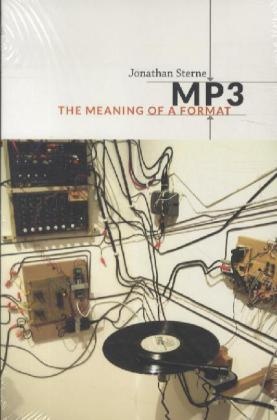Read more
Informationen zum Autor Jonathan Sterne Klappentext MP3: The Meaning of a Format recounts the hundred-year history of the world's most common format for recorded audio. Understanding the historical meaning of the MP3 format entails rethinking the place of digital technologies in the larger universe of twentieth-century communication history, from hearing research conducted by the telephone industry in the 1910s, through the mid-century development of perceptual coding (the technology underlying the MP3), to the format's promiscuous social life since the mid 1990s.MP3s are products of compression, a process that removes sounds unlikely to be heard from recordings. Although media history is often characterized as a progression toward greater definition, fidelity, and truthfulness, MP3: The Meaning of a Format illuminates the crucial role of compression in the development of modern media and sound culture. Taking the history of compression as his point of departure, Jonathan Sterne investigates the relationships among sound, silence, sense, and noise; the commodity status of recorded sound and the economic role of piracy; and the importance of standards in the governance of our emerging media culture. He demonstrates that formats, standards, and infrastructures-and the need for content to fit inside them-are every bit as central to communication as the boxes we call "media." Zusammenfassung Jonathan Sterne shows that understanding the historical meaning of the MP3! the world's most common format for recorded audio! involves rethinking the place of digital technologies in the broader universe of twentieth-century communication history. Inhaltsverzeichnis Acknowledgments ix Format Theory 1 1. Perceptual Techniques 32 2. Nature Builds No Telephones 61 3. Perceptual Coding and the Domestication of Noise 92 4. Making a Standard 128 5. Of MPEG, Measurement,and Men 148 6. Is Music a Thing? 184 The End of MP3 227 Notes 247 List of Interviews 295 Bibliography 299 Index 331...

